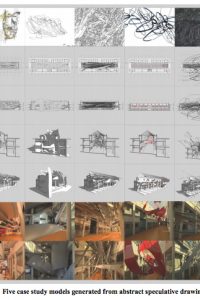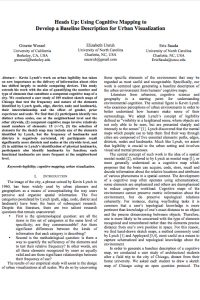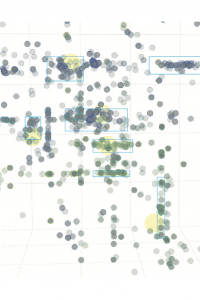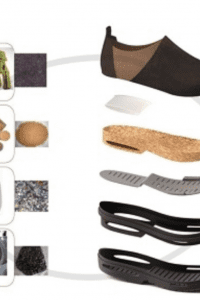Papers

PAPER[space] Architecture: A tool kit for Speculative Digital Drawing
Despite exponential developments in technological manufacturing and computational design, the act of drawing still plays a role as the central vehicle for speculation in architectural practice. Historically, drawing has been tied to not only advances in architecture, but advances in technology and culture as well. From Alberti’s Lineaments, to da Vinci’s Machines, to Thomas More’s […]

Machine Learning Models for Directed Curation of Design Solution Space
DesComp Thesis Completed by Christian Sjoberg (2017)- Presented at ACADIA 2017

Legible Cities: Focus-Dependent Multi-Resolution Visualization of Urban Relationships
Numerous systems have been developed to display large collections of data for urban contexts; however, most have focused on layer- ing of single dimensions of data and manual calculations to un- derstand relationships within the urban environment. Furthermore, these systems often limit the user’s perspectives on the data, thereby diminishing the user’s spatial understanding of […]

Heads Up: Using Cognitive Mapping to Develop a Baseline Description for Urban Visualization
Kevin Lynch’s work on urban legibility has taken on new importance as the delivery of information about cities has shifted largely to mobile computing devices. This study extends his work with the aim of quantifying the number and type of elements that constitute a competent cognitive map of a city. We conducted a user study […]

Evaluating Progressivism: A Critique of Biological Analogy
It would seem that since humanity first began building settlements and creating tools that it has been marching tenaciously upon a path of progress. So intertwined have been the actions of humanity with advancement, that the ages themselves take title from the character of human creation. The Stone Age, The Bronze Age, and the Iron […]

Emergent Syntax: Machine Learning for the Curation of Design Solution Space
The expanding role of computational models in the process of design is producing exponential growth in parameter spaces. As designers, we must create and implement new methods for searching these parameter spaces, considering not only quantitative optimization metrics but also qualitative features. This paper proposes a methodology that leverages the pa ern modeling properties of […]

Digital Minds, Materials, and Ethics: Linking Computational Thinking and Digital Craft
This paper describes the connections between computation- al thinking and digital craft, and proposes several ways that architectural education can cultivate better digital craft, specifically: motivating the use of computational strategies, encouraging a conceptual understanding of computing as a medium, teaching computer programming, and discussing digital ethics. For the most part, these subjects are not […]

Digital Design for Disassembly Introduction
The building sector is now widely known to be one of the biggest energy consumers, carbon emitters, and creators of waste. Some architectural agendas for sustainability focus on energy efficiency of buildings that minimize their energy intake during their lifetime – through the use of more efficient mechanical systems or more insulative wall systems. The […]

DIGITACTILITY by Nicholas Ault
Through an investigation into material phenomenology and digital fabrication a codependent relationship evolved revealing the possibilities that these new technologies can having with respect integrating the architect more fully in the construction and fabrication of architecture. These studies used an digital and analog generative design process as an approach to reveal the characteristics and possibilities […]

Data and Design: Using Knowledge Generation/Visual Analytic Paradigms to Understand Mobile Social Media in Urban Design
Architects and designers have recently become interested in the use of “big data”. The most common paradigm guiding this work is the optimization of a limited number of factors, e.g. façade designs maximizing light distribution. For most design problems, however, such optimization is oversimplified and reductive; the goal of design is the discovery of possibilities […]